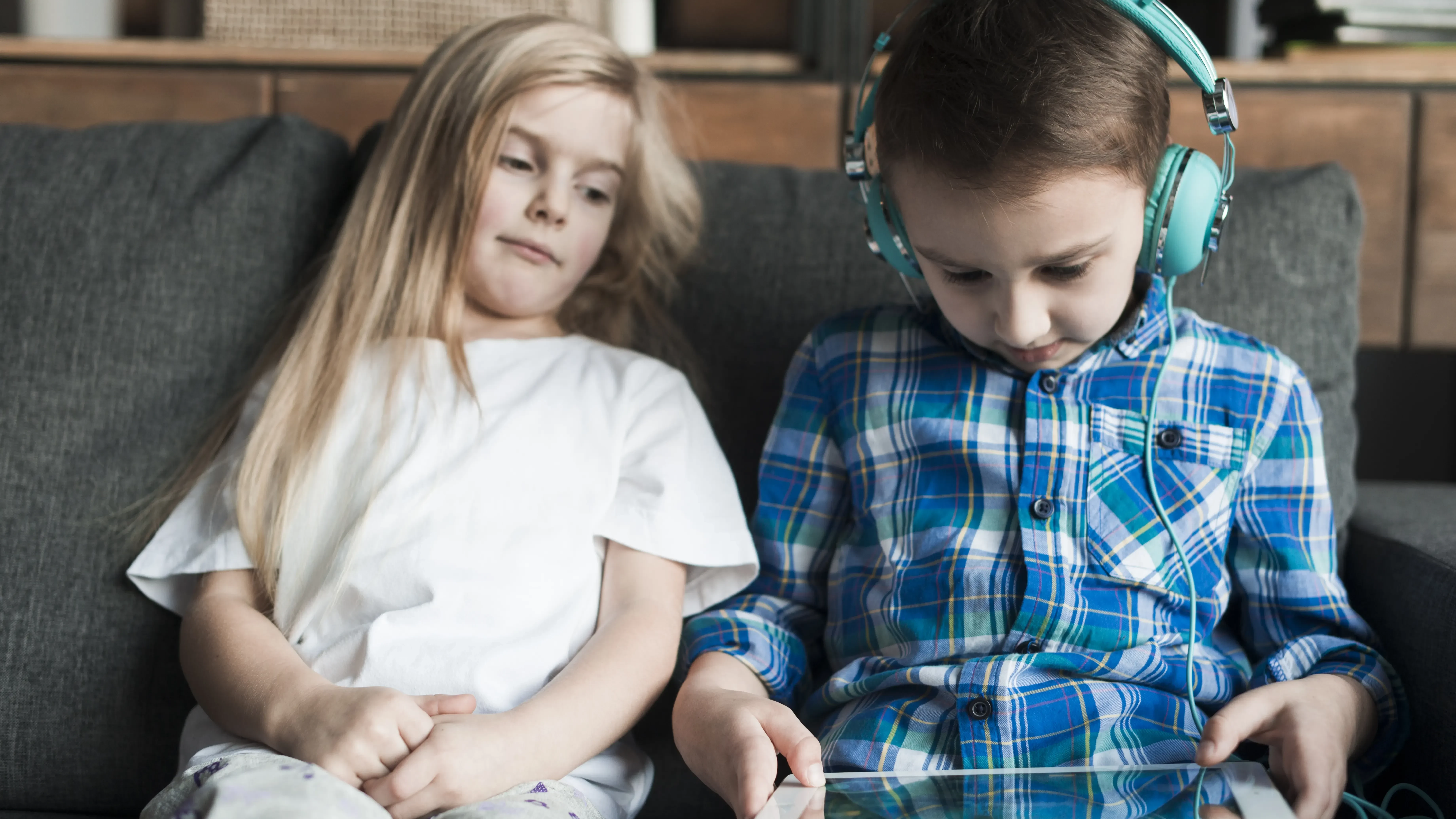
Dry Eye Syndrome: How Parental Control Kroha Can Protect Your Child's Vision
In today’s digital age, children are increasingly exposed to screens from an early age. This surge in screen time has brought to light several health concerns, one of the most pressing being Dry Eye Syndrome (DES). According to recent studies, the prevalence of dry eye symptoms in children has risen sharply, paralleling the increase in digital device usage. As children spend more hours on gadgets for education and entertainment, understanding and mitigating the risks associated with DES has become crucial for parents aiming to protect their child’s vision.
What is Dry Eye Syndrome?
Dry Eye Syndrome is a common condition where the eyes do not produce enough tears or the right quality of tears to keep the eyes adequately lubricated. DES can lead to inflammation and damage to the eye’s surface. First defined in medical literature in the late 20th century, DES encompasses a variety of symptoms including discomfort, visual disturbances, and potential eye surface damage. Prolonged DES can pose serious risks, such as increased susceptibility to eye infections and chronic inflammation, underscoring its potential danger if left untreated.
What Causes Dry Eye Syndrome in Kids
Several factors contribute to the development of Dry Eye Syndrome in children, primarily driven by the digital era’s reliance on electronic devices:
1. Prolonged Use of Gadgets: Extended screen time reduces the frequency of blinking, which is essential for maintaining eye moisture. Studies by ophthalmology specialists indicate a direct correlation between screen time and the onset of DES symptoms in young users.
2. Insufficient Blinking: Concentration on digital screens leads to decreased blink rates, causing rapid tear evaporation and ocular surface dryness.
3. Unfavorable Lighting and Dry Air: Improper lighting conditions and environments with low humidity further exacerbate tear evaporation, increasing the risk of DES.
Consequences of Dry Eye Syndrome in Kids
The repercussions of Dry Eye Syndrome extend beyond immediate discomfort:
1. Discomfort, Redness, and Itching: Persistent dryness can lead to significant irritation, making it uncomfortable for children to engage in daily activities.
2. Blurred Vision: Insufficient moisture compromises the cornea’s ability to maintain a clear surface, resulting in blurred or fluctuating vision, which can affect academic performance and overall quality of life.
3. Long-term Complications: Ignoring DES symptoms can lead to more severe complications, including chronic inflammation, corneal damage, and increased risk of infections, as highlighted by ophthalmology research.
How Kroha Parental Control Helps Protect Your Child's Eyesight
Kroha Parental Control offers a comprehensive solution to mitigate the risks of Dry Eye Syndrome through its innovative “Eye Protection” feature. This function integrates several strategies to safeguard children’s eye health:
- Maintaining Distance Between the Screen and Eyes: Kroha monitors and ensures that devices are kept at a healthy distance from the eyes, reducing strain and tear evaporation associated with prolonged screen use.
- Limiting Screen Time and Setting Breaks: By regulating the duration of screen exposure and enforcing regular breaks, Kroha helps prevent overuse, allowing time for the eyes to rest and recover.
- Night mode: This feature can be programmed according to your child's daily schedule to minimize the impact of blue light in the evening.
Along with using digital monitoring tools, parents are advised to:
- Remind kids to blink and do eye exercises: encourage kids to blink and do eye exercises, which helps produce tears and reduces dryness.
- Ensure adequate lighting conditions and adjust device settings to avoid excessive exposure to blue light, which causes additional strain on the visual system.
Additionally, alternative tools like EYESPRO offer robust vision protection features. EYESPRO provides similar functionalities, including customizable screen filters and comprehensive eye care routines. For a detailed overview, watch the EYESPRO Video Review.
Tips for Parents
Protecting your child’s eyesight involves a multi-faceted approach:
1. Use Parental Controls to Limit Screen Time: Employ tools like Kroha to set appropriate screen time limits, ensuring balanced device usage.
2. Create a Comfortable Environment for Eye Health: Ensure proper lighting, maintain optimal screen distance, and control ambient humidity to create an eye-friendly environment.
3. Importance of Regular Eye Exams: Schedule routine check-ups with eye care professionals to monitor your child’s eye health and address any emerging issues promptly.
4. Encourage a Healthy Lifestyle: Promote activities that involve fresh air and physical exercise, which are beneficial for overall eye health and reduce reliance on digital devices.
Monitoring and managing children’s screen time is essential in preventing Dry Eye Syndrome and preserving their vision in the digital age. Tools like Kroha Parental Control play a pivotal role in implementing effective vision protection strategies, ensuring that children can enjoy the benefits of technology without compromising their eye health. Parents are encouraged to take proactive steps today to safeguard their child’s vision by integrating parental control apps, fostering healthy screen habits, and prioritizing regular eye care. Start protecting your child’s eyesight now with Kroha and ensure a healthier, clearer future for their vision.
Recent articles
Google Gemini for children under 13
In today’s digital age, the topic of artificial intelligence in education has grown increasingly important. With new tools emerging almost every day, many parents are concerned about the safety and appropriateness of AI for their children, especially those under the age of 13. One of the prominent AI products making headlines is Google Gemini—a tool designed to function as a smart assistant in everyday life as well as in educational settings. As the use of modern technology in education becomes more widespread, it is crucial for parents to understand both the benefits and risks associated with Google Gemini. This article aims to provide an expert, trustworthy guide for parents, enriched with real-life examples and practical insights, on how to navigate safe internet usage and maintain digital safety when children interact with Google Gemini.
Info-Scamming in Online Courses: How to Choose Quality Education
In the digital age, online education has become a cornerstone for learning, especially for children. However, alongside the growth of legitimate online classes and courses, there has been a surge in information scamming (info-scamming) targeting parents and students. Understanding the intricacies of info-scamming in online education is crucial to ensure children receive quality education while staying safe from internet scams.

